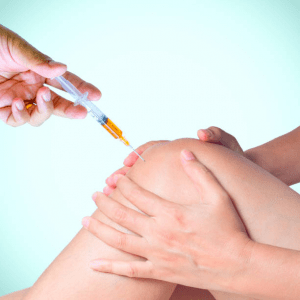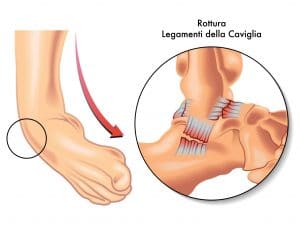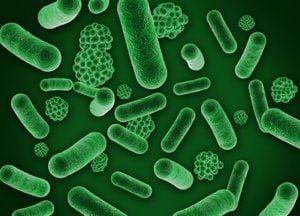Hyaluronic Acid

Hyaluronic Acid

What is Hyaluronic Acid (HA)?
Hyaluronic Acid is one of millions of complex, naturally occurring chemical compounds produced by the body. It is found in large amounts in the skin and connective tissue. The primary purposes of HA are to lubricate and moisturize. The full, plump, hydrated look of younger skin is largely a result of this miraculous substance.
Collagen is also important for a full, perky facial appearance with plenty of volume. This structural protein is more of a building block, and has little to do with hydration. Treatments which increase collagen production are quite useful. They can do nothing to reverse the age-related decrease in Hyaluronic Acid production that occurs as we age, though.

Hyaluronic Acid supplements for joint health?
Initial research says “yes.”
Hyaluronic Acid (HA) might not be a household name yet, but lately it’s been attracting considerable attention. This compound resembles a clear gel in it’s pure, hydrated form, and can absorb hundreds of times its weight in water. It isn’t surprising, then, that HA is included in many high-end facial moisturizing products as the primary active ingredient.
The moisturizing and lubricating properties of Hyaluronic Acid aren’t limited to the skin, however. The substance is also found as part of the fluid found inside of the body’s many joints. There it both lubricates the joint during motion and ensures that the cartilage inside the joint remains hydrated. In cases of “wear and tear” arthritis (osteoarthritis) of the knee, purified HA gel can be injected directly into the damaged joint. This often provides great, if temporary, relief.
But can Hyaluronic Acid supplements be taken orally? More research is needed, but recent studies indicate they might. It’s currently believed that HA works in much the same way as another popular (and well-researched) joint supplement—Glucosamine. This naturally occurring substance is often combined with chondroitin, a compound derived from shellfish.
Hyaluronic Acid (HA) can speed and enhance wound healing.
Hyaluronic Acid plays a large role in how your body maintains its moisture levels. It is particularly critical in helping the skin remain hydrated in all conditions. When the skin is damaged, the lubricating and protective properties of HA become even more important.
HA is present in normal, healthy skin, and these levels naturally spike when the skin is damaged. It’s part of the body’s healing response. Small cuts, surgical incisions, and other shallow, non-puncture wounds can also benefit from applying HA ointment.
Clear Hyaluronic Acid gels of various concentrations were used in several large, well-designed wound healing studies. These preparations were applied daily to minor cuts and other wounds. Wound size was measured regularly until complete healing occurred. It was found that, when compared to a placebo, the wounds treated with HA healed significantly faster.
Hyaluronic Acid (HA) can reduce infections.
 Complications such as infections and impaired healing were also reduced. This could make topical HA gel treatment highly beneficial for diabetic patients, particularly their feet.
Complications such as infections and impaired healing were also reduced. This could make topical HA gel treatment highly beneficial for diabetic patients, particularly their feet.
Diabetes can damage the small nerves and arteries of the feet, which can have two detrimental effects. The first is reduced sensation. Many diabetics simply can’t feel their feet well (or at all), and can easily damage them without realizing it. The second is an increased risk of infection. The reduced blood flow commonly seen in diabetic feet makes infection more likely. When they do occur it’s harder for these patients to fight them off, and complications occur more frequently. More research is needed on topical HA and wound healing in diabetic feet, but initial results look promising.
Hyaluronic Acid aids in healing by providing a moisture-retaining barrier which protects delicate healing tissue. HA gels also display a mild yet broad-spectrum antibacterial action. This directly reduces a patient’s risk of infection.
It is also thought that HA acts as a chemical signal which promotes the growth of new blood vessels. This vascular network of capillaries (tiny arteries) and equally small veins provides the circulation all wounds need while healing.
Only topical application of Hyaluronic Acid gel has been proven effective under research conditions. It is unknown at this time whether oral HA supplementation would provide any benefits. Other areas of investigation should include the possible use of HA mouth-rinses for use after dental surgery. Hyaluronic acid could also prove useful in treating burns by accelerating the healing process while reducing infection rates.
What is the recommended aftercare routine for optimal results?
After undergoing hyaluronic acid treatment, it’s essential to follow a recommended aftercare routine to ensure optimal results and minimize the risk of complications. Here are some general guidelines that are often recommended:
- Avoid Touching the Treated Area: For the first few hours after the procedure, avoid touching, pressing, or massaging the treated area. This helps the filler to settle naturally.
- Minimize Physical Activity: Avoid strenuous exercise and activities that cause excessive sweating for at least 24 hours. This reduces the risk of swelling and bruising.
- Avoid Alcohol and Blood Thinners: Refrain from consuming alcohol and medications or supplements that thin the blood (like aspirin, ibuprofen, or fish oil) for a few days post-treatment. These substances can increase the risk of bruising.
How long does the procedure usually take, and is it painful?
The duration of a hyaluronic acid procedure and the level of pain experienced can vary based on the specific treatment and the individual’s pain tolerance. Here’s a general overview:
Duration of Procedure:
- Quick Procedure: Hyaluronic acid injections are usually relatively quick, often taking around 15 to 60 minutes to complete, depending on the area being treated and the complexity of the procedure. Certain treatments, such as lip fillers or small wrinkle injections, can be completed in a matter of minutes.
Pain and Discomfort:
– Mild Discomfort: Most people report feeling only mild discomfort during the procedure. This is because modern hyaluronic acid fillers often contain a local anesthetic called lidocaine, which helps numb the area being injected. This reduces the pain significantly.
– Topical Anesthetics: In some cases, a topical numbing cream is applied to the skin before the injections to further minimize discomfort.
– Pain Tolerance Varies: Pain perception is subjective and varies from person to person. What one person experiences as discomfort might be more or less noticeable to another.
Hyaluronic Acid and Skincare

The following is a brief overview of Hyaluronic Acid’s place in the anti-aging and skincare industry. We’ll also go into the science behind the fantastic and reliable results it delivers. Experts predict that HA will become a permanent addition to many ultra-premium serums and moisturizers. For many who take their skincare seriously it’s already a part of their daily routine.
 Hyaluronic Acid can directly influence skin hydration. What’s more, it’s easily applied in a topical cream or serum. Several topical products are available which claim to replenish collagen, or to somehow reverse collagen degradation. This claim has been very hard to back up, however. HA is readily absorbed by the skin, and there’s plenty of evidence to back up its many beneficial effects.
Hyaluronic Acid can directly influence skin hydration. What’s more, it’s easily applied in a topical cream or serum. Several topical products are available which claim to replenish collagen, or to somehow reverse collagen degradation. This claim has been very hard to back up, however. HA is readily absorbed by the skin, and there’s plenty of evidence to back up its many beneficial effects.
Does Hyaluronic Acid (HA) cause any side effects?
Does Hyaluronic Acid (HA) cause any side effects?
The Hyaluronic Acid (HA) you’ll find in the topical product you’re using has been extensively tested for safety. It carries no significant risks and is entirely safe for almost all patients. Remember that HA is produced naturally by the body as a lubricant and moisturizer. It is hypo-allergenic, and won’t interfere with other products you’re using. For all practical purposes it’s inert.
Yet Hyaluronic Acid is a very large and complex molecule. Electron microscopes reveal brush-like structures which can branch hundreds or thousands of times. They resemble a bush or piece of coral in many ways. Like a bush, individual HA molecules can be of any size, large or small. Fortunately, extensive research has been done on which sizes are most beneficial,
So no, the HA in the commercially available product you’re using can’t hurt you. Yet some studies indicate that very small HA molecules may be indirectly harmful. You will probably never encounter these short-branch varieties unless you’re an industry research chemist, however.
Under laboratory conditions, very short branch HA’s have been linked to inflammatory skin conditions such as psoriasis. They have also been shown to inhibit wound healing. Again, your skin will never come into contact with these varieties under normal, day-to-day circumstances.
A final note on side effects—the HA concentration of your product should be no higher than 2%, the industry-recommended standard. Higher concentrations could potentially draw water out from the skin. This is the exact opposite of what an HA product is designed to do. Nearly all of the products available in stores or online will be at 2%. The only exception is highly concentrated HA, which is intended for use as an ingredient in other serums. This shouldn’t be used in undiluted form, yet it can’t cause lasting harm
